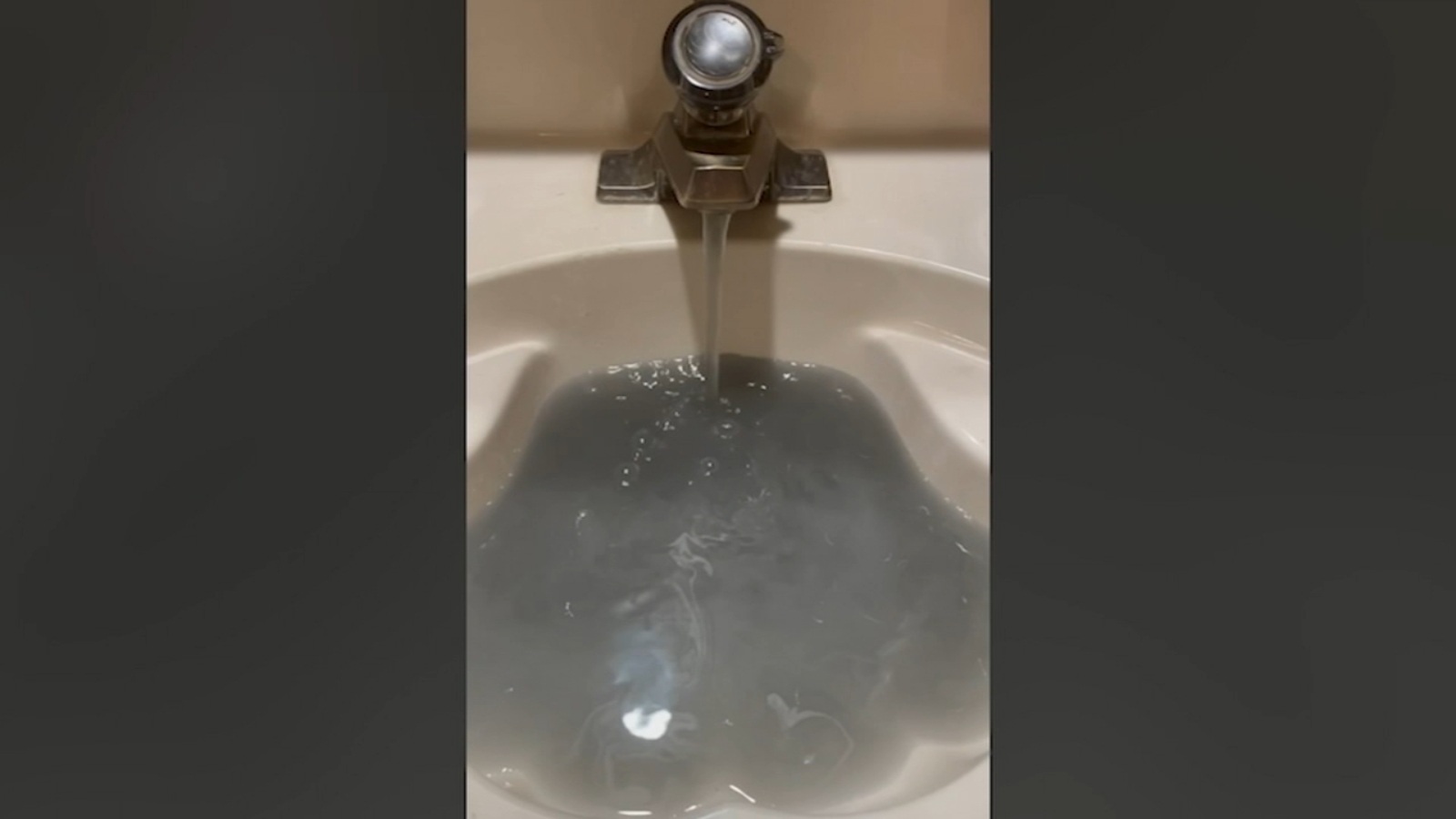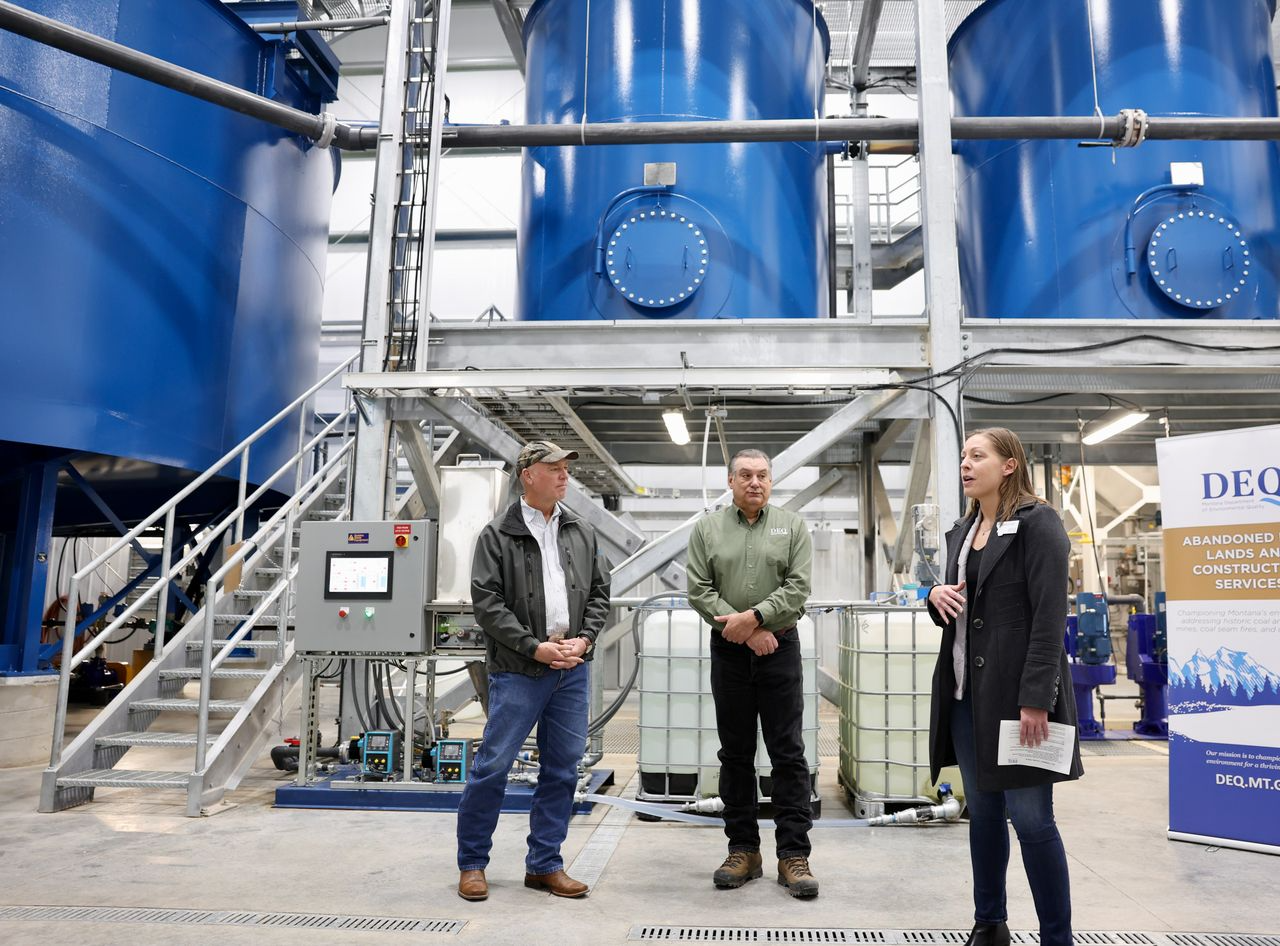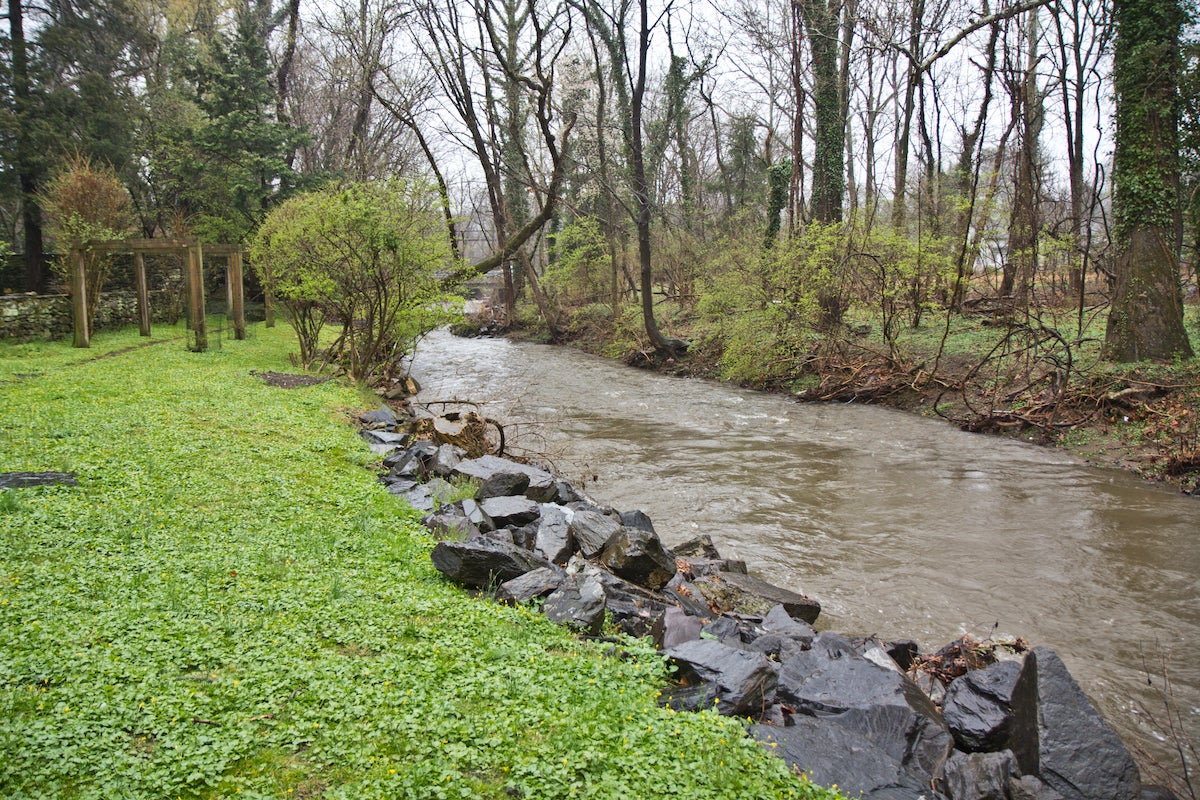Chillicothe Mayor Explains Concerns About Paper Mill Shutdown Affecting Wear-Ever Groundwater Pollution – Scioto Post

Report on Groundwater Contamination and Sustainable Development Initiatives in Chillicothe
A report was presented to the Chillicothe City Council by Mayor Luke Feeney regarding significant environmental and urban development matters. The central issue concerns legacy industrial pollution and its potential impact on local water resources, a situation that directly intersects with several United Nations Sustainable Development Goals (SDGs). This report outlines the environmental challenge, the institutional response, and related progress toward creating a sustainable community.
Environmental Impact and SDG Alignment
Groundwater Contamination and SDG 6 (Clean Water and Sanitation)
A significant environmental risk has been identified concerning a plume of toxic chemicals in the groundwater beneath a former industrial site at 1089 Eastern Avenue. This issue poses a direct threat to the objectives of SDG 6, which aims to ensure the availability and sustainable management of water and sanitation for all.
- Source of Contamination: The pollution originates from a site formerly operated by Alcoa, Wear-Ever, and Rubbermaid, and currently managed by Howmet.
- Containment Mechanism: The migration of the chemical plume has historically been contained by the continuous pumping of two wells (wells 17 & 18) operated by the Pixelle paper mill.
- Emerging Threat: The recent shutdown of the paper mill raises concerns that the cessation of pumping will allow the plume to migrate with the natural groundwater flow, potentially contaminating a larger area of the Teays Valley aquifer.
Public Health and SDG 3 (Good Health and Well-being)
The potential migration of toxic chemicals presents a risk to public health, a core concern of SDG 3. While the municipal water supply, located two miles away, is not currently considered at risk, the integrity of the broader groundwater system is a priority for ensuring community well-being.
- The city’s Wastewater Treatment Plant is located near the plume but is not anticipated to be affected as it processes sewage and does not draw from the aquifer.
- The city administration has affirmed its commitment to monitoring the situation to prevent any adverse health outcomes for its residents.
Governance, Accountability, and Partnerships
Institutional Response and SDG 16 (Peace, Justice and Strong Institutions)
The city’s response, in coordination with state authorities, reflects the principles of SDG 16, which promotes effective, accountable, and inclusive institutions at all levels.
- Mayoral Briefing: Mayor Feeney provided a detailed briefing to the City Council, ensuring transparent communication with elected officials and the public.
- Regulatory Action: The Ohio Environmental Protection Agency (EPA) has mandated that Howmet conduct a risk assessment and install additional monitoring wells to track the plume.
- Municipal Support: The City of Chillicothe supports the Ohio EPA’s enforcement actions and advocates for holding Howmet accountable for remediation.
Corporate Accountability and SDG 12 (Responsible Consumption and Production)
The situation with the “zombie site” highlights challenges related to SDG 12, which calls for sustainable production patterns and the environmentally sound management of chemicals and wastes throughout their life cycle.
- A formal request has been submitted to the City Council by former councilman Jamie Brown to issue a subpoena to Howmet.
- The request demands that Howmet present a comprehensive remediation plan and provide community safety assurances, reinforcing the principle of corporate accountability for industrial pollution.
Related Urban Development Initiatives and SDG 11 (Sustainable Cities and Communities)
Alongside addressing the environmental challenge, the city is advancing several projects that contribute to SDG 11, which aims to make cities and human settlements inclusive, safe, resilient, and sustainable.
Sustainable Infrastructure and Services
- Water Rate Adjustment: A 2% water rate increase was approved to fund the maintenance and sustainability of the city’s water infrastructure, directly supporting SDG 6.
- Infrastructure Improvement: The city is undertaking street repairs and constructing its first dedicated salt shed to protect road treatment materials from the elements, improving municipal service resilience.
Adaptive Reuse of Buildings
- Centralized City Facilities: Renovation of the “Pepsi Building” on East 7th Street is complete, allowing for the consolidation of city operations into a repurposed structure.
- Community and Cultural Space: Plans are being discussed to transfer the former city water shop on Park Street to the Military Tribute Museum, demonstrating a commitment to repurposing existing assets for community benefit.
Analysis of Sustainable Development Goals in the Article
1. Which SDGs are addressed or connected to the issues highlighted in the article?
The article discusses several issues in Chillicothe, primarily focusing on environmental pollution, urban infrastructure, and local governance. These topics directly connect to the following Sustainable Development Goals (SDGs):
- SDG 6: Clean Water and Sanitation: The central theme of the article is the threat of groundwater pollution from a “plume of chemicals” originating from a former factory site. The potential contamination of the “Teays Valley aquifer” and the role of water wells in containing this pollution are key concerns, directly aligning with the goal of ensuring the availability and sustainable management of water.
- SDG 9: Industry, Innovation and Infrastructure: The article touches upon the city’s infrastructure projects, including the renovation of the “Pepsi Building” for centralized city facilities, street repairs and repaving, and the construction of a new “salt shed.” The 2% water rate increase is also mentioned as a means to fund infrastructure maintenance and improvements.
- SDG 11: Sustainable Cities and Communities: The issue of the contaminated industrial site, described as a “zombie site,” and the need for its cleanup relate to reducing the adverse environmental impact of cities and managing industrial waste. The article highlights the challenge of managing legacy pollution within an urban area.
- SDG 12: Responsible Consumption and Production: This goal is relevant through its focus on the environmentally sound management of chemicals and wastes. The article details the problem of “toxic chemicals” in the groundwater from past industrial production and the responsibility of the company, Howmet, to manage and remediate this pollution.
- SDG 16: Peace, Justice and Strong Institutions: The article showcases local governance in action. Mayor Luke Feeney’s briefing to the city council, the city’s communication with the Ohio EPA, and Councilman Jamie Brown’s formal request for a subpoena demonstrate efforts to build effective, accountable, and transparent institutions to address public safety and environmental concerns.
2. What specific targets under those SDGs can be identified based on the article’s content?
Based on the issues discussed, several specific SDG targets can be identified:
- Target 6.3: “By 2030, improve water quality by reducing pollution, eliminating dumping and minimizing release of hazardous chemicals and materials…”
- Explanation: The entire discussion about the “plume of chemicals” in the groundwater and the need for Howmet to “deal with the pollution” directly addresses this target. The goal is to prevent the migration of these hazardous chemicals and improve the quality of the local aquifer.
- Target 11.6: “By 2030, reduce the adverse per capita environmental impact of cities, including by paying special attention to air quality and municipal and other waste management.”
- Explanation: The article’s focus on the contaminated groundwater from the former Wear-Ever factory, a “zombie site” within the city, is a clear example of an adverse environmental impact. The city’s and EPA’s efforts to compel Howmet to create a “remediation plan” are aimed at managing this industrial waste legacy.
- Target 12.4: “By 2020, achieve the environmentally sound management of chemicals and all wastes throughout their life cycle… and significantly reduce their release to air, water and soil in order to minimize their adverse impacts on human health and the environment.”
- Explanation: This target is directly relevant as the core issue is the historical mismanagement of “toxic chemicals” that have been released into the groundwater. The ongoing requirement for Howmet to monitor and plan for remediation reflects the need for environmentally sound management of this legacy waste.
- Target 9.1: “Develop quality, reliable, sustainable and resilient infrastructure… to support economic development and human well-being…”
- Explanation: The article mentions several infrastructure projects: “street repair and repaving,” the construction of the city’s “first salt shed,” and the completed renovation of the “Pepsi Building” for city operations. These actions represent the development of quality and reliable public infrastructure.
- Target 16.6: “Develop effective, accountable and transparent institutions at all levels.”
- Explanation: The mayor providing a detailed “briefing to city council” on the pollution issue is an act of transparency. Furthermore, Councilman Brown’s formal request to “issue a subpoena to representatives of Howmet Aerospace” is an attempt to hold the company accountable through institutional processes.
3. Are there any indicators mentioned or implied in the article that can be used to measure progress towards the identified targets?
The article implies several quantitative and qualitative indicators that could be used to measure progress:
- For Targets 6.3, 11.6, and 12.4 (Water Quality and Waste Management):
- Indicator: The concentration of toxic chemicals in groundwater samples. The article mentions the Ohio EPA has requested “additional monitoring wells to allow more water sampling,” which is a direct method for gathering data for this indicator.
- Indicator: The existence and implementation of a remediation plan. The article states that Howmet is required “to present full documentation of their remediation plan.” The development and subsequent execution of this plan would be a key progress indicator.
- Indicator: The number of unremediated contaminated sites. The characterization of the Wear-Ever facility as a “zombie site” serves as a baseline; its successful cleanup would reduce this number.
- For Target 9.1 (Infrastructure):
- Indicator: Investment in infrastructure. The “2% water rate increase” approved by the council is a financial indicator of investment in water systems.
- Indicator: Number of completed infrastructure projects. The article notes the finished “renovation on the East 7th Street ‘Pepsi Building'” and the start of construction on the “first salt shed” as concrete examples of progress.
- For Target 16.6 (Accountable Institutions):
- Indicator: Number of public briefings on critical issues. The mayor’s 11-minute briefing is an example that can be tracked over time.
- Indicator: Official actions taken to ensure corporate accountability. The formal request for a subpoena is a specific, measurable action aimed at holding a private entity accountable.
4. Summary Table of SDGs, Targets, and Indicators
| SDGs | Targets | Indicators |
|---|---|---|
| SDG 6: Clean Water and Sanitation | 6.3: Improve water quality by reducing pollution and minimizing the release of hazardous chemicals. | Concentration of toxic chemicals in groundwater samples from monitoring wells. |
| SDG 11: Sustainable Cities and Communities | 11.6: Reduce the adverse per capita environmental impact of cities, including waste management. | Number of unremediated contaminated industrial sites (“zombie sites”) within the city. |
| SDG 12: Responsible Consumption and Production | 12.4: Achieve environmentally sound management of chemicals and all wastes. | Existence and implementation of a corporate “remediation plan” for the chemical plume. |
| SDG 9: Industry, Innovation and Infrastructure | 9.1: Develop quality, reliable, sustainable and resilient infrastructure. | Number of completed infrastructure projects (e.g., renovated buildings, new salt shed); Financial investment in infrastructure (e.g., 2% water rate increase). |
| SDG 16: Peace, Justice and Strong Institutions | 16.6: Develop effective, accountable and transparent institutions at all levels. | Number of public briefings by officials on key issues; Number of official actions (e.g., subpoenas) taken to ensure corporate accountability. |
Source: sciotopost.com

What is Your Reaction?
 Like
0
Like
0
 Dislike
0
Dislike
0
 Love
0
Love
0
 Funny
0
Funny
0
 Angry
0
Angry
0
 Sad
0
Sad
0
 Wow
0
Wow
0














































































